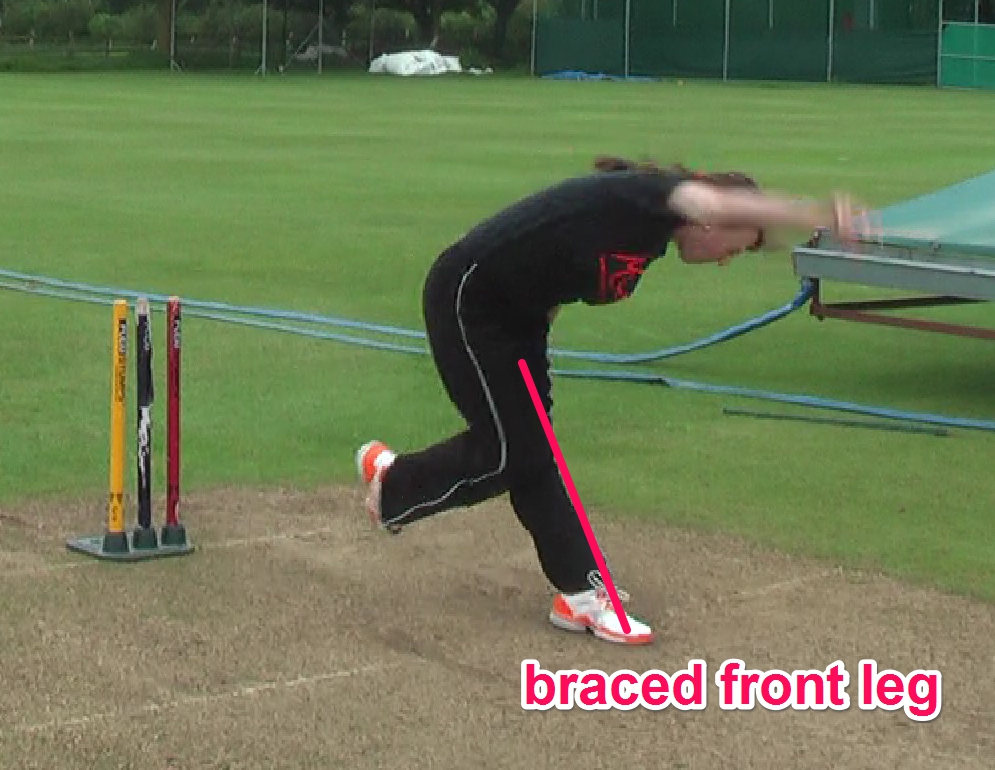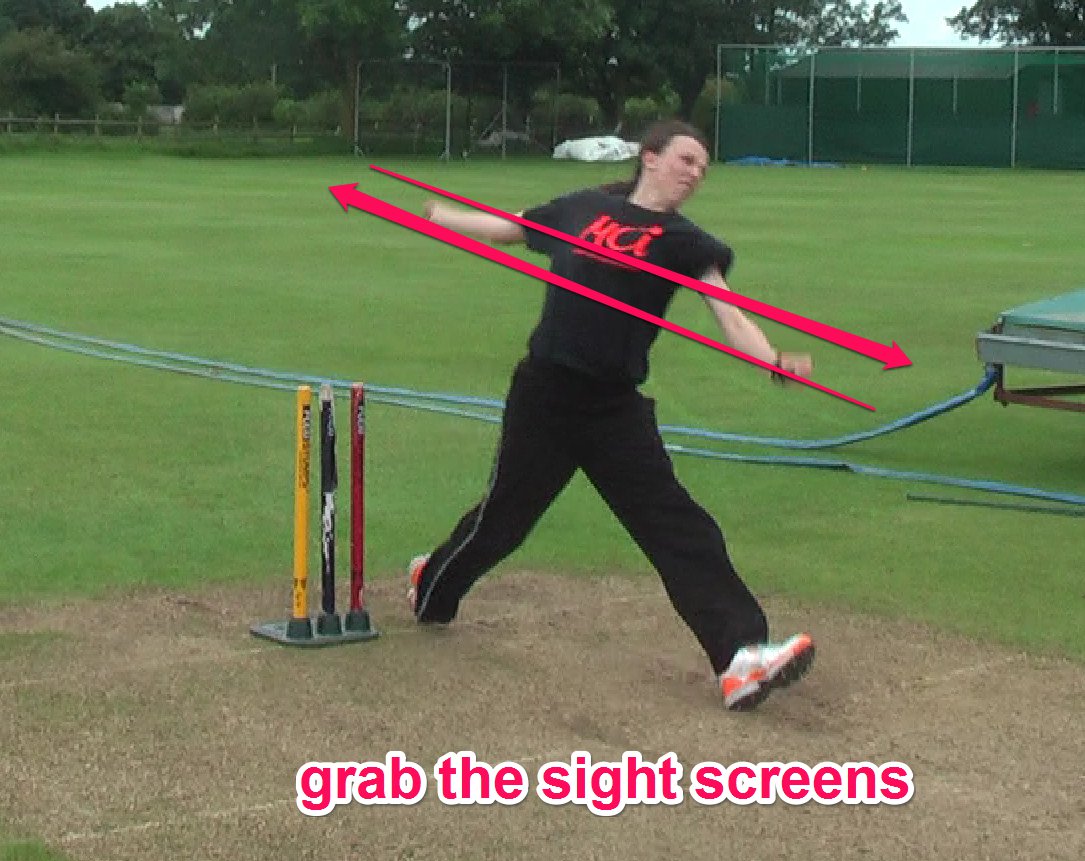|
 Speed. Speed.
We all feel the need.
Whatever your pace now, more is better. Speed creates new problems for the batsman. It's your job to create problems for that guy.
The problem is that everyone has different needs, and not all fast bowling tips work for all fast bowlers. You have to experiment with some things to see what works for you. The good news is that the feedback is instant: You either got quicker, or you didn't.
So try these ways proven ways to bowl faster and let me know how you got on:
Copy javelin thrower's legs
Fast bowling technical expert Ian Pont can be credited for this one. Ponty, after studying javelin thrower technique, realised that a straight, or braced, front leg is a powerful method of generating power. The lower body of a fast bowler and a javelin thrower are identical.
The braced leg acts as a block that throws energy up your body and into the ball.

When you bend your front leg, some of that force is lost and your pace will dip. So it's an easy win to tech yourself to keep the front leg braced like a javelin thrower. Get the drills to learn this method from here.
Grab the sight screens
This technical tip also comes from Ian Pont. It's another simple way to make a technical change that improves bowling speed. In this case, you imagine grabbing the sight screens both in front and behind you.

Doing this as you move from the front foot to the back foot will stretch your upper body to it's full extent. Our muscles are like an elastic band. When stretched they will ping back to their resting length with force. And force means speed into the ball.
Build the right body
PitchVision Academy has long screamed against the idea that gym work means bodybuilding. But, as a bowler you can build a body that is designed for speed rather than the beach.
If you are too skinny you need more muscle.
If you are too overweight you need less fat.
If you are in between you can do a bit of both.
Whatever your body type, you can do with being stronger. This is because bowling speed is improved by putting power from your body into the ball. Power is strength times speed. So, the stronger you get with weights, the faster you get as a bowler.
Raw strength is best developed in the gym with tradition methods like lifting up heavy weights. Bodyweight training has a place but at some point you are going to need to squat, deadlift, press and pull weights. So, find a gym with good trainers who can show you the right way to lift heavy, then get to it.
Join the gym to pitch dots
Simply getting strong will make a huge lift to your speed, but to add even more kph's you can learn to transfer raw strength to bowling speed with specialised tools like kettlebells, weighted balls and medicine balls.
These tools are heavier than a cricket ball, yet lighter than the free weights you find in the gym. That means they act as a bridge between the extremes of a 100kg front squat and bowling at 140kph.
Naturally, you can't just throw things around and hope for the best. You need to plan your training to peak at the start of the summer and maintain that standard throughout the season. Lucky enough, Steffan Jones has plenty of advice for you.
Stretch where your body stretches
As you know from the technical tips above, when you bowl you stretch as much as you can because the greater the stretch the greater the reflex. You can improve this stretch by improving the parts of your body that stretch.
For speed this is your thoracic (or middle) spine and your hips.
In fact, it's the case that the main difference between a "slingy" fast bowler and someone more orthodox is mobility in the t-spine.
It's impossible to be too mobile in these areas whatever your action, so you can work on mobility every day if you are especially weak in these areas. It only takes a few minutes a day to do mobilisations. You can do them as part of your usual warm up for games, gym or training. And you can do them at home as no equipment is required.
If you take the time you will find that over the period of a few weeks you can stretch further than before, grab those sight screens and get into better positions. That means more speed.
Bowl enough, not too much

One of the problems of being a fast bowler is that cricket is a long game. Sprinters don't have to reign in their speed because they run 15 100m in a day for 4 months, but that's exactly what you find yourself doing. So, the key is to find a balance.
Lucky enough, the ECB have researched how much bowling is optimal and have come up with the 7/4/2 system. I would recommend sticking to this as it avoids the dangers of over bowling (and slowing down) while giving you "overs in the legs".
Yes, it is compromise, but unless you can work out how to keep your pace up during long spells, it's the best we have at the moment.
And that's your pace primer.
I know it's a lot to take in, and will take time and planning to put into place. Only the truly dedicated to bowling fast will take advantage of the advice. They are the ones who you will see on your TV taking wickets.
I hope you are one of them too.
Discuss this article with other subscribers
|

.jpg)



.jpg)

